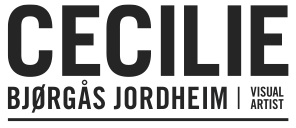A couple of weeks ago the Norwegian Broadcasting Radio (NRK P2) discussed in the radio show "Språkteigen" the possibility for the handwriting to die away in the future. A hundred years ago 95 % of all written texts was done by hand, but now that most of us are using keyboards instead of pen and paper, write e-mails instead of letters, this might be a fact. At least that's what director of Copenhagen Institute of Futures Studies Johan Peter Paludan thinks.
Handwriting has been controlled by trends trough-out the years. In Norway the handwriting has been influenced by both Gothic, German and English handwriting styles. Handwriting (skjønnskrift) was an important part of the curriculum in primary schools. I remember I easily wrote 25 tightly written pages by hand in my art history exam 8 years ago, but after being used to typing on my computer I simply don't think I could've done that today.

On the height of abstract expressionism the interest for animal paintings increased. The monkey paintings showed the purest abstract painting. The painting was cleansed by the cultural filter that held back the liberated man (not yet woman). Child paintings was looked upon the same way. They were painted by hands that had yet no training in writing and the gestures were thus primitive and genuine. From the abstract expressionist's view the skilled writing hand was the modern literate hand and thus not free. Although I am fascinated by people who can write nicely with both hands, I am also fascinated about the uncontrollability and the lines of my left hand while drawing or writing. I tried for a while to use my left hand more, on the reasons that it would stimulate my right hemisphere of the brain which controls creativity, artistic awareness and imagination. But in the middle of the experiment I just had to stop with the reason that I did not want my left hand to be that skilled and trained so that it would loose it's primitive lines. But from time to time I use my left hand and, by Paul Klee's description of drawing, "take a line out for a walk".

Handwriting has been controlled by trends trough-out the years. In Norway the handwriting has been influenced by both Gothic, German and English handwriting styles. Handwriting (skjønnskrift) was an important part of the curriculum in primary schools. I remember I easily wrote 25 tightly written pages by hand in my art history exam 8 years ago, but after being used to typing on my computer I simply don't think I could've done that today.

On the height of abstract expressionism the interest for animal paintings increased. The monkey paintings showed the purest abstract painting. The painting was cleansed by the cultural filter that held back the liberated man (not yet woman). Child paintings was looked upon the same way. They were painted by hands that had yet no training in writing and the gestures were thus primitive and genuine. From the abstract expressionist's view the skilled writing hand was the modern literate hand and thus not free. Although I am fascinated by people who can write nicely with both hands, I am also fascinated about the uncontrollability and the lines of my left hand while drawing or writing. I tried for a while to use my left hand more, on the reasons that it would stimulate my right hemisphere of the brain which controls creativity, artistic awareness and imagination. But in the middle of the experiment I just had to stop with the reason that I did not want my left hand to be that skilled and trained so that it would loose it's primitive lines. But from time to time I use my left hand and, by Paul Klee's description of drawing, "take a line out for a walk".

